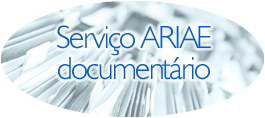RICKERSON, WILSON
UNITED NATIONS ENVIRONMENT PROGRAMME (UNEP)
ENERGIAS RENOVABLES
ENERGIA ELECTRICA
POLITICA ENERGETICA
REGULACION
ECONOMIA INTERNACIONAL
This report is intended as a resource for policy makers in developing countries to make informed policy decisions about the whether,when and how of FITs and to support nationally appropriate policy measures to scale up renewable energy. The report is also intended to improve the understanding of the potential benefits and challenges for developing countries to design FITs as well as the factors influencing their success, more in depth from the policy and legal foci, whilst also analysing the funding and capacity implications. Throughout the report, FITs are construed as interacting with national energy and non-energy policies in a dynamic manner.
<b>Table of Contents</b>
<b>List of Figures</b>
<b>List of Tables </b>
<b>List of Text Boxes </b>
<b>List of Acronyms</b>
<b>Executive Summary </b>
<b>1. Introduction</b> 1.1. The overarching framework 1.2. Feed-in tariffs in developing countries 1.3. Policy Considerations and Constraints 1.4. Report structure
<b>2. Policy Instruments to Scale Up Renewables: FIT Policy Overview and Major Design Elements</b>
2.1 Renewable energy policies 2.2.1 Rebates and grants 2.2.2 Tax credits 1 2.2.3 Renewable Portfolio Standards and Quota Systems 2.2.4 Competitive tenders and auctions 2.2.5 Tradable Renewable Energy Credits 2.2.6 Net metering 2.2.7 Competing or combining policies?
2.2 General FIT requirements
<b>3. Law Drafters' Guide: Design Options and Considerations for Adapting Feed-in Tariffs to the Developing Country Context </b> 3.1 Methodology 3.2 Developing FITs through Law Regulation
3.3 Feed-In Tariff Design Issues Options and Law Drafter's Guide 3.3.1 Integration with policy targets 3.3.2 Policy objectives in law 3.3.3 Eligibility 3.3.4 Tariff differentiation 3.3.5 Setting the FIT rate 3.3.6 Payment Duration 3.3.7 Payment Structure 3.3.8 Inflation 3.3.9 Cost recovery 3.3.10 Interconnection Guarantee 3.3.11 Interconnection Costs 3.3.12 Purchase and Dispatch Requirements 3.3.13 Amount Purchased 3.3.14 Purchasin Entity 3.3.15 Commodities Purchased 3.3.16 Triggers and Adjustments 3.3.17 Contract Issues 3.3.18 Payment Currency 3.3.19 Interaction with other incentives
3.4 Rate Setting Methodology
<b>4. Funding feed-in tariffs</b> 4.1 FITs may not require cost recovery
4.2 Cost recovery options
4.3 Lowering the required FIT rates 4.3.1 Raising the price of fossil fuel electricity 4.3.2 Introduce policies that lower the generation cost of renewable energy
4.4. International funding options 4.4.1 Existing international funds 4.4.2 Emerging trends in international climate finance 4.4.3 The emergence of innovative models 4.4.4 Discussion
<b>5.Capacity Requirements</b> 5.1 Assessments 5.2 Developing FITs through Law Regulation
<b>6. Next Steps </b>
<b>REFERENCES</b>
DOCUMENTOS E INFORMES
AYUDAS Y SUBVENCIONES
PRIMAS REGIMEN ESPECIAL
PROMOCION Y FOMENTO DE ENERGIAS RENOVABLES
